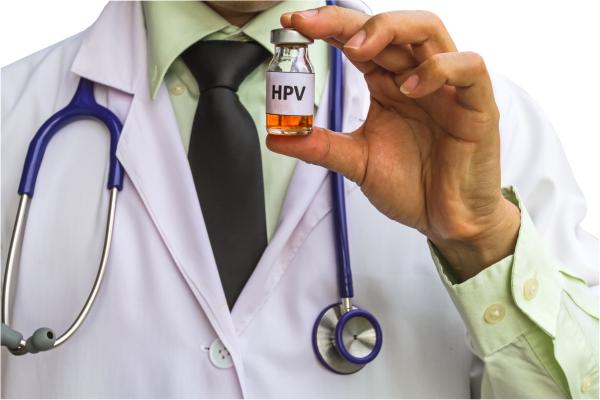HPV—Human Papillomavirus— is a frequently overshadowed sexually transmitted infection when the topic of STDs hits the spotlight. This is unfortunate as HPV impacts an estimated 79 million Americans currently infected. (1) The Centers for Disease Control and Prevention (CDC) reports “every year approximately 17,600 women and 9,300 men are affected by cancers caused by HPV.” (2)
Due to the existence of many strains of HPV, the result of infection can lead to health issues like genital warts or an array of oropharyngeal (aka oral and throat) and anogenital (aka anus, vulva, cervical, vagina, penis) cancers. Many infected are unaware of their status and naturally clear the virus on their own without long-term personal consequence. However, due to such common asymptomatic presentations, HPV can readily spread between sexual partners and manifest differently dependent on the strength of a person’s individual immunity, for instance. Thus, prompting extended adverse effects in others.
A new study just published in JAMA Oncology endeavored to tackle largely unknown genital HPV prevalence and vaccination rates in males. The National Health and Nutrition Examination Survey (NHANES 2013-2014) evaluated 1868 men ages 18-59. DNA was taken from self-collected penile swabs and information acquired on demographics and vaccination via home-based interviews. Due to the self-reporting, when it comes to STDs especially the data can be over or underreported—a known limitation to this study and its authors.
The results claim an overall male genital HPV prevalence of 45.2% in the sampled population. A bimodal pattern of infection peaked among men ages 28-32 then even higher at ages 58-59. (3) Their data revealed an overall vaccine rate of 10.7% (reflecting 729 of those who were or are eligible). Of those ages 18-22, 22% reported at least one dose of HPV vaccine, while 48.1% asserted completion of the series.
The researchers concluded “our study indicates that male HPV vaccination may have a greater effect on HPV infection transmission and cancer prevention in men and women than previously estimated. Further studies may be warranted to evaluate the rationale regarding the current male vaccination age cutoff.”
These results differ for female HPV prevalence where peaks occur before age 20 and decrease in later years—also, female vaccine rates are higher. (4) Because women are routinely screened during their gynecologic examinations, actions can be taken to impede progression and likely, in part, account for these discrepancies. Another significant factor influencing the gender disparity is how the vaccine was originally rolled out into the market.
The rates of HPV vaccination in the US are low which is due to multiple reasons. When the vaccine came to market in 2006, it was only recommended for young girls—so boys were not included. This is atypical for vaccine launches as they are traditionally tested in males and females and administered to both once released. Additionally, it was very expensive and often not reimbursed by insurance companies, so stocking them for practitioners was a significant hurdle—creating a major impedance to optimizing vaccine rates. Hence, the supply was a more staggered one, starting with obstetrician/gynecologists (ob/gyns) being among the first to administer it. Pediatric practices ultimately followed, but there was a substantial lag.
Because the vaccine was originally advised to be given to girls at 11 or 12 —well in advance of sexual activity— and required three doses to complete the series, it was often difficult for parents to get on board. Since boys were able to be impacted and spread HPV too, this became a meaningful sticking point. Eventually in 2009 it was approved for males for genital warts prevention, but not dramatically inclusive for routine prevention till 2011 when the guidelines expanded to include boys.
From then till now, the available vaccine more than doubled in its coverage of HPV strains. And, recently, the recommendations changed to require two doses for younger pre-teens which will hopefully serve to improve completion rates. Because HPV infection is often asymptomatic and sexual activity seems so far off into the future, there still are challenges for pediatricians in discussions with parents as those who struggle with the concept, in general, consume a lot of office visit time. With teenagers in particular, sexual activity tends to happen suddenly, unexpectedly and without planning. This is why being fully protected in advance is so crucial to avoiding HPV.
The good news is safe and effective vaccination is an option to cover the most frequent strains that are known to be cancer-causing as well as ones that are the main culprit for the development of genital warts. Latex condoms should be used correctly every time to reduce risk— but, are not a guarantee as infection can arise from areas outside of condom protection.(5) It is always important to practice safe sex even when vaccinated. Though the vaccine covers the most frequent offenders, other HPV strains and sexually transmitted infections (e.g. HIV, HSV, Gonorrhea) exist.
With the public becoming more informed about the ramifications of HPV infection and ever-increasing vaccine awareness is being championed, the vaccination rates are slowly improving (but, do vary by state). (6)
When it comes to cancer, prevention is always preferred to diagnosis and treatment. Discuss vaccination and your (and your kids) eligibility with your doctor.
NOTES:
For further information on STD trends, review Gonorrhea and Chlamydia and Syphilis, Oh My! and Gargling with Listerine Impedes Oral Gonorrhea?
SOURCES:
(1) (2) (5) Click here to learn more: Genital HPV Infection—CDC Fact Sheet.
(3) (4) Han, Jasmine et al. Prevalence of Genital Human Papillomavirus Infection and Human Papillomavirus Vaccination Rates Among US Adult Men —National Health and Nutrition Examination Survey (NHANES) 2013-2014. JAMA Oncology. January 19, 2017.
(6) To learn about U.S. vaccine rates, review CDC literature here.




